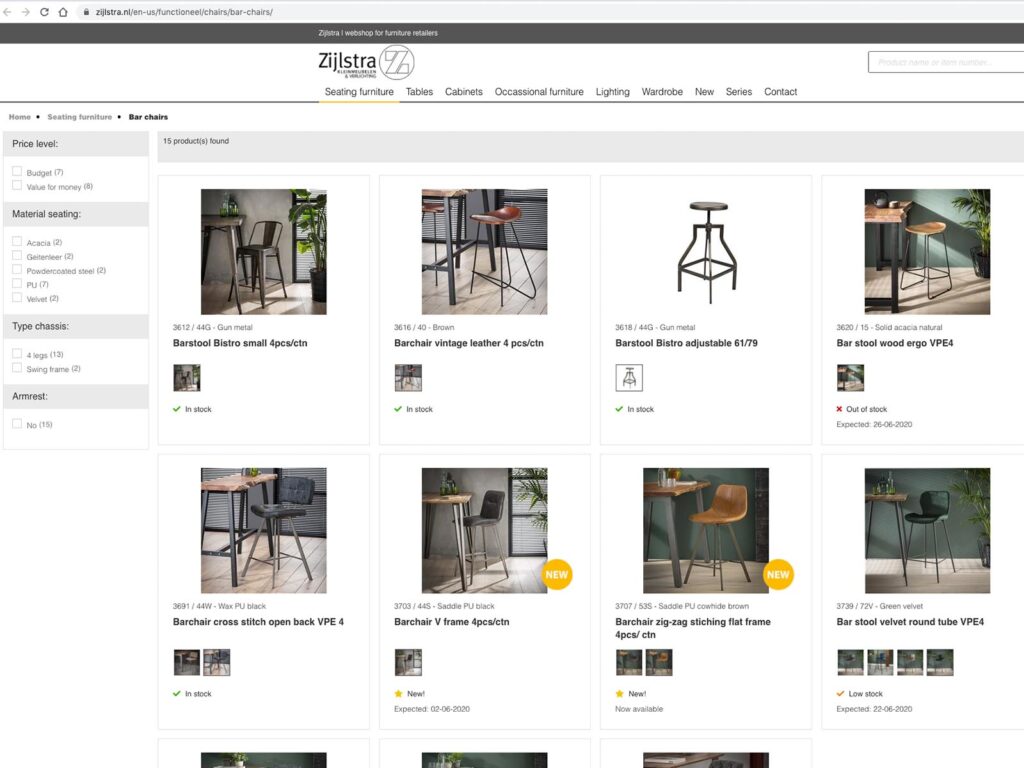More work is involved in dropshipping than you might think. That’s why we’ve compiled three essential tips for companies who want to get started with dropshipping. Read on to find out what you need to focus on getting right first.
Dropshipping is a method for wholesalers and other companies to sell items that they don’t have in stock through their web store. The items are sent to the customer by a supplier, which could be a dropshipping wholesaler or manufacturer.
This can be great for companies that don’t want to invest resources in a large product inventory and the space needed to store it. Another benefit is that you don’t have to deal with the surplus if the items don’t sell as well as you anticipated.
But there aren’t only benefits to starting a web store using only dropshipment, and the same is true for suppliers who want to offer dropshipping services to their clients.
Are you considering getting started with dropshipping? Here are the most important tips to make your dropshipment project a success.
Does your wholesale or manufacturing company want to start offering dropshipment services to clients? Or are you part of a company looking for dropshipping suppliers to send items directly to your customers? Either way, there’s one thing that has to be excellent: your relationship with your dropshipping partner.
But why?
Because choosing dropshipping (either as a supplier or user) is choosing close collaboration.
Dropshipping suppliers deliver items directly to their clients’ end users. For companies using dropshipment services, it means you depend heavily on your supplier.
The opposite is also true. If you’re a supplier, your clients’ choices with regard to things like returns can have a considerable impact on your organization. The same applies to the various parties involved in such processes, such as package services.
In theory, dropshipping suppliers and clients are independent. That’s why it’s vital to carefully select your partner and cultivate a strong relationship. Make sure your collaboration is based on trust; communicate clearly and make concrete agreements.
Found your ideal partner? Established impeccable communication? Then it’s time to move on to the next most important factor in dropshipping success: the products.
This is what it’s all about: the items you supply to end users, or sell through your web store.
If you’re a seller choosing dropshipment, you don’t need to purchase inventory. Your range of products can be as broad (or as a niche) as you want. But with your low margins (and your product marketing) it’s wise to think carefully about your strategic choices.
On the flip side of the coin: dropshipping suppliers need to think about the way you offer your products. Will you go for white label products, or apply your client’s branding to the packaging? Or will you always deliver boxes and packages with your own name? Another thing to consider is the kind of packages and pallets you put together for customers.
It’s good to note that not all products are suitable for dropshipment.
Here’s some guidance:
As a dropshipper, it’s important to deliver the products as quickly as possible, but the size of the product matters — as it influences the time of delivery. If you’re —for example— a furniture supplier, shipping times depend highly on the size of a product (i.e. corner sofas will takelonger to deliver then a kitchen chair).
The best products that can be sold through dropshipping are long-tail products and seasonal products. ‘Long-tail product’ is a term used to describe the retailing strategy of selling a large number of unique items in relatively small quantities.
Why use long-tail products for dropshipping? Long-tail products are sold in smaller volumes, but are popular enough to keep in your assortment. The problem with long-tail products is that inventory is
less predictable. You want to unburden your retailers by making better use of their valuable storage space.
This also applies to seasonal products. It isn’t convenient to keep these products in stock year-round.
Dropshipping gives your retailers the opportunity to have these items always available without having to waste valuable space to store them until they’re sold

It’s great for merchants when a supplier has extensive product information and strong product descriptions. However, if you’re a seller, you should be critical of whether you want to use the information exactly as provided by the supplier, or whether to customize it first.
This is particularly pertinent if you want to increase your online visibility. Search engines reward unique content and penalize duplicate content (the exact same content offered in different places). And seeing as you’re probably not the only person using your partner’s dropshipment services, editing the product information is worthwhile.
As a manufacturer or wholesaler your business is accustomed to high-volume or bulk orders. You have to remember that this will not be the case with dropshipping. Instead of large volume orders – the end customer (via a retailer) typically will order in smaller quantities.
Consider leveraging fine-meshed distribution (delivering a single package to an individual address, as opposed to a truck delivery of large orders to multiple locations) as a solution the case with dropshipping.
Consider setting a minimum purchase quantity or order value to keep dropshipping profitable and beneficial. Be aware that when shipping smaller quantities, there are often more handling costs involved. Prepare your business for these smaller orders and make sure you can actually handle them.
There are a few different ways to price your dropshipping services.
Many companies choose dropshipping because it’s a cost-effective way of satisfying their customers rising expectations without needing to worry about overstocking inventory or taking up room in warehouse. Ultimately, your mission as a dropshipper is to meet the delivery time expectations of the end customer — preferably staying within 24 to 48 hours.
How can you meet these expectations? One way is to integrate your web store with your ERP system, as you can with Sana. With an integrated web store, order processing can be handled automatically, with no manual work required. Your customers can also order from your integrated web store 24/7, and get delivery updates post-order.
As supplier, if your web store is integrated with your ERP, you can use it to give tracking information to retailers. They can, in turn, pass this information on to the end-customer so they can then track the delivery of their package.
A tracking link is a must-have for both the end-customer and the wholesaler. With this link the wholesaler doesn’t end up having any unpleasant surprises, like packages getting lost.
Providing a tracking link is of great importance to ensure customer satisfaction. Recent research by Forrester showed that 78% of B2B buyers consider having a track and trace code very important to their overall satisfaction.
As a dropshipping supplier, you’re solely responsible for the delivery of the product to the end-consumer. The customer, however, should have such a seamless experience that it should not be apparent that their product is being shipped by anyone other than the retailer through with their order was places.
This means that you, as the supplier, need to be invisible to the end customer. There shouldn’t be any of your own logos on the packaging. Need some help figuring out your packaging strategy?
There are two different packaging strategies you can choose from:
One of our clients, Zijlstra, uses the white labeling method. They send all their packages with their customers’ logo on it, and have seen great success, but beware that it is the more expensive option.
As a dropshipping supplier, you have one important task: to ensure that the delivery of the product goes smoothly as possible. Delivering the product in no time (or what feels like no time) is the main focus. Of course, problems may arise during the delivery of the product.
To mitigate these potential issues, make sure that your after-sales service works perfectly. Invest in a good support department, especially since B2B customers expect their customer service complaints to be resolved within 24 hours or less.
If delivery doesn’t go as planned, the best thing to do is be transparent and communicate. Make sure your customer service team is fully informed of the situation, so they can in turn inform the end-customer.
Dropshipment logistics aren’t always straightforward: inventory management, transport, processing orders…
As a manufacturer, wholesaler or distributor, you have to deal with complex business processes. The last thing you want is for your dropshipping activities to make things even more labyrinthine. The good news is that it doesn’t have to!
How can you make sure that you can continue operating smoothly? The answer is in line with what we discussed above: it’s all about the agreements you make.
Strong, clear agreements can help you deal with any potential logistics issues caused by dropshipping, such as:
Making sure that matters like these are covered by clear agreements makes dropshipping logistics much easier for both parties.
Another important aspect of successful dropshipping logistics is inventory and catalog management. You don’t want end users ordering items, only to find out that you don’t have enough in stock. That’s why real-time insight into inventory levels is a key feature for any e-commerce platform used for dropshipping.
Armed with these tips, you’re ready to lay a strong foundation for a successful dropshipping business. But these pointers aren’t enough: you also need the right mix of sales channels and platforms.
Discover the latest sales channel trends here.
The sales channels you choose can make or break your dropshipping endeavor, even if you’re an established wholesaler branching out into dropshipping.
Take our client Zijlstra, for example.
Their web store helped them perfect their dropshipping services without having to move mountains. This is because their web store is seamlessly integrated with their ERP system, Microsoft Dynamics AX. Product information, order streams, inventory levels… it’s all synchronized in the web store.
This setup makes its logistics significantly simpler. Zijlstra added a dropshipping option to its e-commerce platform to complement their standard and rush shipping services, and their web store was ready.
The integration with their Microsoft Dynamics AX ERP system also makes it easy for Zijlstra to share real-time inventory levels with their clients. This helps them prevent unpleasant surprises when placing orders: great for them, the supplier, and the end-user.
Want to get into dropshipping? Remember, you need to cover three essential matters before you kick-off:
An important step for suppliers interested in dropshipping is being able to offer all your products online. This gives your business partners a clear and convenient overview of your catalog. But with the complexity facing many wholesalers, distributors and manufacturers, this is often easier said than done.